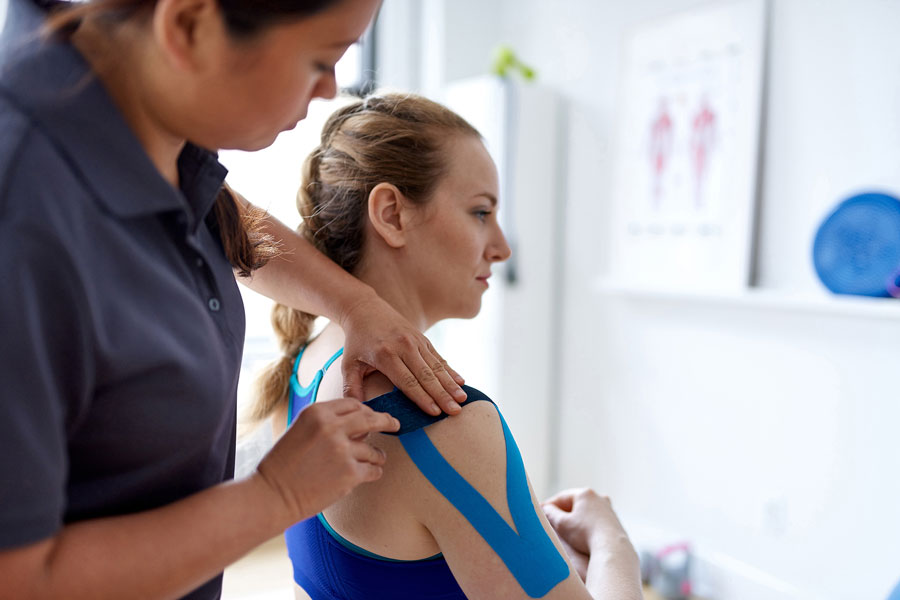
Heard Of Taping?
No, it’s not your usual tape! Kinesio taping is a therapeutic tape which has its origins in Japan in the 1970s. Since then it has been used by healthcare professionals not only in sports medicine but also in other medical disciplines such as paediatrics and for those with neurological conditions. The main reason for using Kinesio tapes is the prevention of injury and the treatment of the musculoskeletal system in particular. In some cases, however, it can improve the performance of athletes. Kinesio taping is a very good method when dealing with musculoskeletal system damage, such as various types of bursitis, contusions, sprains, joint instability or deformity.
Kinesio Tape Principle
To activate the affected area, and to alleviate any potential problems by restoring physiological function.
For example, when chronic muscle damage occurs, a local pain arises, muscle tension increases and a liquid accumulates (oedema). The increasing pressure from the oedema simultaneously reduces blood flow and restricts the blood flow to the affected area (ischemia).
By applying Kinesio tapes we can reduce the pressure and stimulate a particular area in order to increase the blood flow to damaged tissues and also reduce oedema. When using Kinesio taping, the positive effects means that the blood and fluid (lymph) circulation are refreshed, meaning that there is a reduced amount of inflammation and swelling.
What are the benefits of Kinesio Taping?
- reduction of excessive irritation and optimization of stimulation of certain receptors followed by an appropriate response in the brain (central nervous system) with reducing pain and enhancing the healing of damaged parts of musculoskeletal system
- required stimulation of certain receptors and appropriate corrections of joint function that cause positive modifications of the movements with better motion range and increased joint stability. This also work well on posture correction.
- Kinesio tape optimizes one’s psychological perspective, refreshes the required blood and lymph circulation resulting in reduced amount of inflammation.
Application of Kinesio Tapes:
Applied Kinesio tapes may also have different shapes, depending on the type of application.
The most commonly used forms are:
- - “I” tape - usually used during acute phase of pain or inflammation,
- - “Y” tape - usually used after the acute phase is over instead of “I” tape,
- - “X” tape - usually used to bring better tension transferred to both ends,
- - “Fan” - usually used for its ability to accelerate the flow of the lymph,
- - “Web” - suitable for treating large joints because of its large surface,
- - “Donut hole” - usually used to unweight a pressure in the damaged area, with a hole in its center, used for bone spurs,
- - “Star” - is created by crossing more “I” tapes or “donut hole” tapes to increase the effect of unweighting the pressure in the centre of the “star”.
Contraindication of Kinesio Taping:
- - Skin irritation
- - Redness of skin
- - Oily/greasy skin (avoid using creams before tape application)
- - Shouldn’t be applied on wounds/bruised/ healing/infected skin
- - Without one’s consent
The proper technique (inhibitory or activation) and percentage of stretch should be determined before its application, depending on the condition and pathology.

 01622 94 20 33
01622 94 20 33 admin@xcelhealth.co.uk
admin@xcelhealth.co.uk

